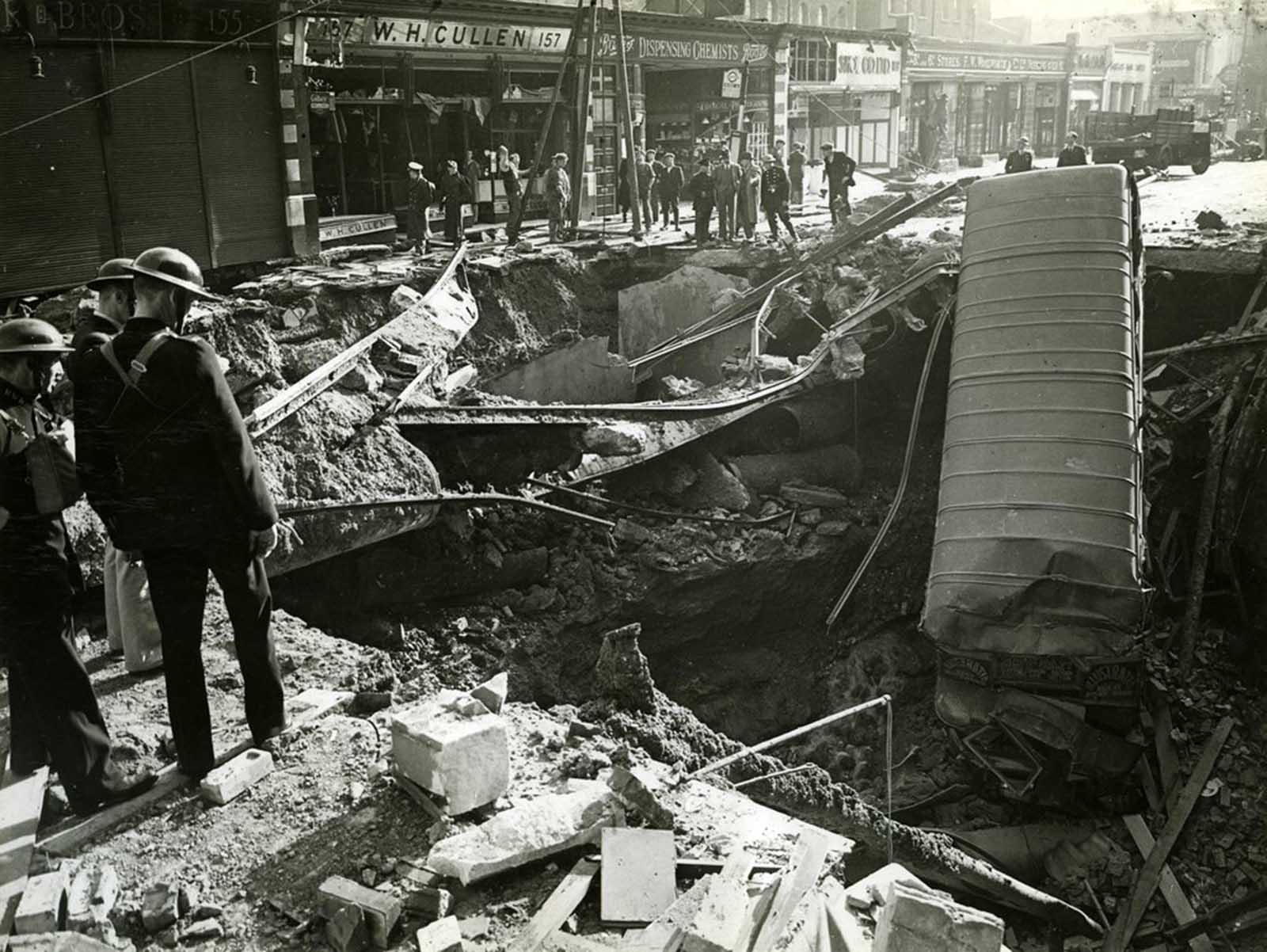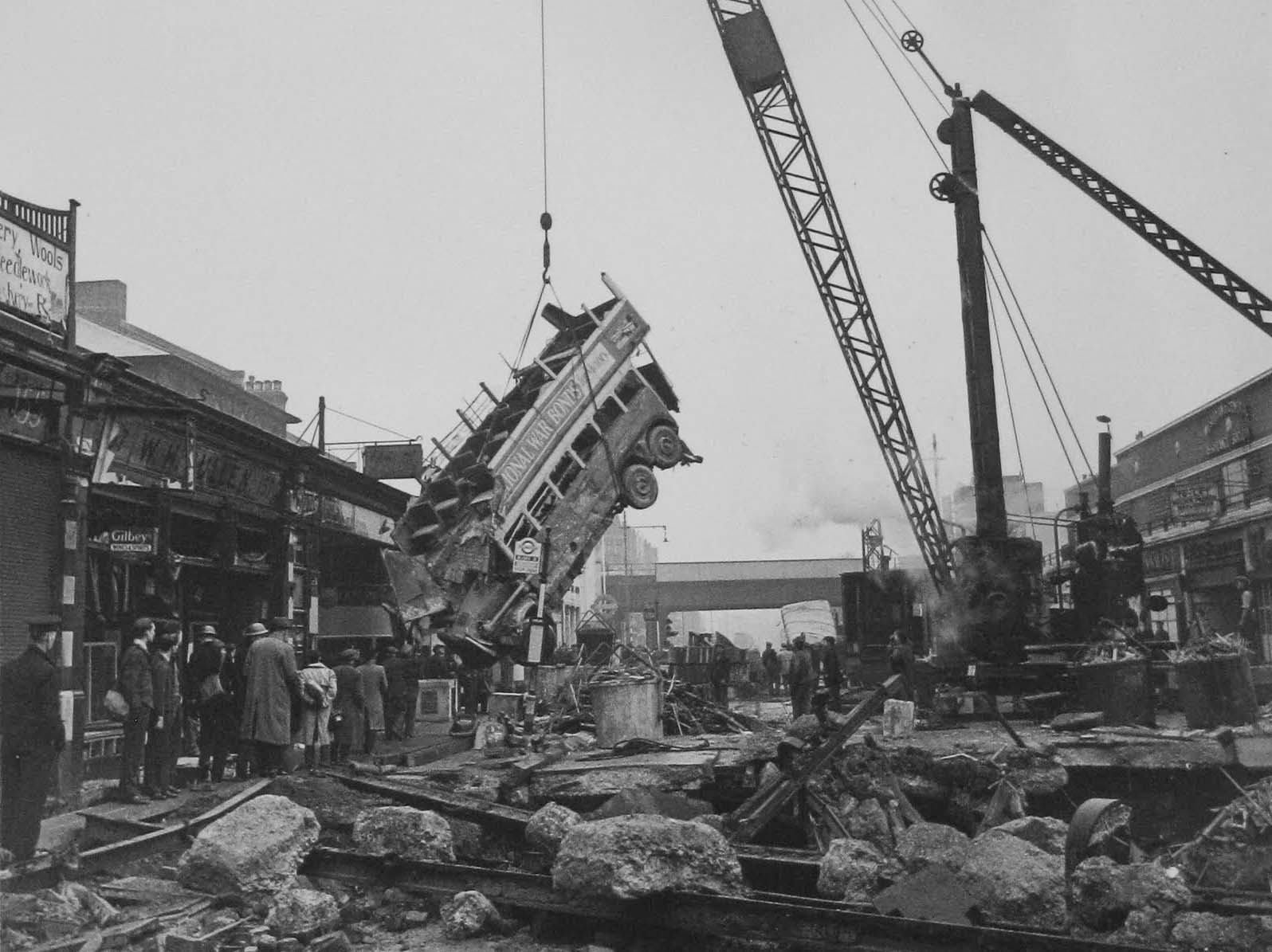The dramatic spectacle of the trapped bus was to become emblematic of the dangers of the Blitz, a series of pictures of it appeared in publications around the world. The northbound platform tunnel partially collapsed and was filled with earth and water from the fractured water mains and sewers above, which also flowed through the cross-passages into the southbound platform tunnel, with the flooding and debris reaching within 91 meters of Clapham South. Water-tight doors designed to keep such floods out instead kept this one in. The lights fused, adding to the chaos. The station was a scene of panic, and though more than 400 managed to escape, 65 or by some account 68 people died in the disaster, most of them drowning. News of the event was as far as possible kept under wraps, the government fearing that the grisly death of so many would be a huge propaganda blow and possibly put civilians off using the underground as shelter. Word of mouth spread about the deaths, however, and the work to open the station again lasted until January of 1941, the last bodies being found at the end of December. Cold weather and memories of those who had died kept many people from using it as a shelter thereafter. In October 2000 a memorial plaque commemorating this event was placed in the station’s ticket hall. It stated that 64 lives were lost, which differed from the CWGC register at the time, and other sources. On 14 October 2010, this was replaced with a new commemorative plaque that does not state the number of fatalities. (Photo credit: Daily News / IWM). Notify me of new posts by email.
Δ Subscribe




